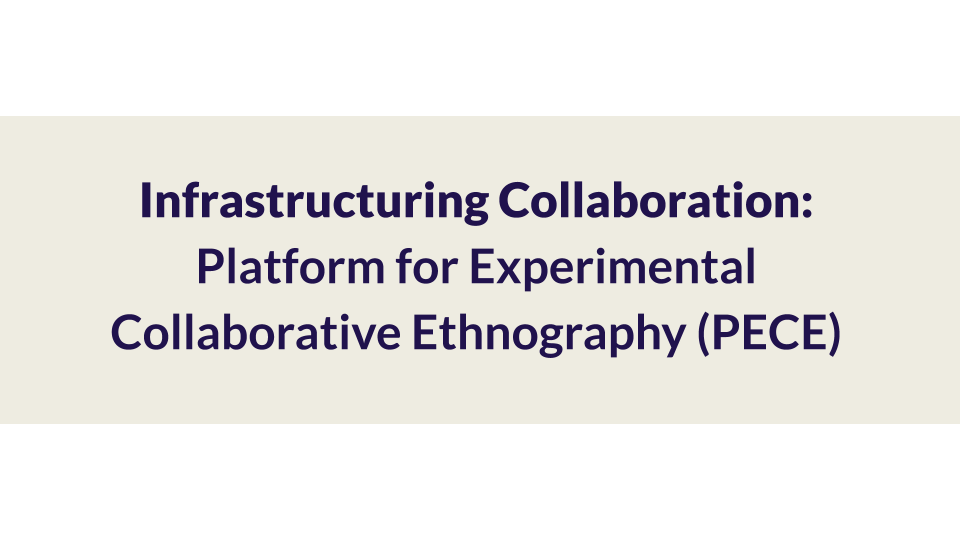
The Platform for Experimental Collaborative Ethnography (PECE) is digital work space especially designed for ethnographers (especially those working in an experimental vein, informed by critical theory). The backstage of a PECE instance allows the creation of lively archives, such as the AiT 2020 Conference Archive.
Many types of data -- from plain text and PDFs to sound and video files -- can be archived and curated in a PECE repository.
In the technical terms of the platform, individual files are called artifacts. They can be used to form larger collections, called essays. Below is a list of exemplary artifacts from different instances:
St. Louis GCADD Lead Documentation: Taracorp Site (PDF, Disaster STS Network)
Indo-US Communities of Researchers Group (Bundle, The Asthma Files)
UCI Anthropology graduate student Angela Okune runs a PECE instance for her project "Research Relations: An Ethnography of Qualitative Data Sharing". Here is an example of how she uses archiving to document an event where open data technologists, archival specialists and government representatives came together: Proceedings of Archiving Kenya’s Past and Futures (PECE Essay,Research Data Share)
Example of a restricted artifact (access can be limited to research groups or individuals):
Under The Dome 穹顶之下 (Video, The Asthma Files)

The center stage facilitates collaborative analysis on the platform through data sharing and shared research questions.
Researchers can form public or private groups, and can respond to the questions in different analytic structures - or create their own.
See, for example, the group space for AiT 2020 and the AiT 2020 Spatial Stories Shared Questions.
To respond to an analytic, users annotate artifacts and essays on the platform. Below are examples of analytics used for different purposes:
How was the data collected? (The Asthma Files)
What Have You Learned About Anthropocenics In This Place? (Disaster STS Network)
VTP Collaboration Biographies (UCI Center for Ethnography)
What discourses shape the way (qualitative) data is talked about? (Research Data Share)
By front stage, we point to the many ways research can be presented on the platform. These can include photo essays, timelines and PECE essays (collages in which each pane in a shadow box-like structure is a portal into a another data layer).
PECE essays, such as STS in Mexico, that includes additional, nested essays: Feminist Studies and Tortillas and Technology at the Border, for example.
Such a collection can also include "photo essays" like this: Innovating STS exhibit catalog.
PECE timelines can stand alone or be embedded in PECE essays. See this: Home Automation timeline and How PM2.5 Became a Thing timeline.
Also see the work produced last year in the Visualizing Toxic Subjects project, which included photo essays, posters and a gallery exhibit.
And see presentations that are part of the Innovating STS Project -- such as Oral Histories of the San Francisco Bay Area with the Anti-eviction Mapping Project and Scholarly Memory in Nairobi (STS Infrastructures)
CITE AS
Srigyan, Prerna, Tim Schütz and Kim Fortun. 2020. PECE Workshop Presentation. UCI Center For Ethnography. February 4.